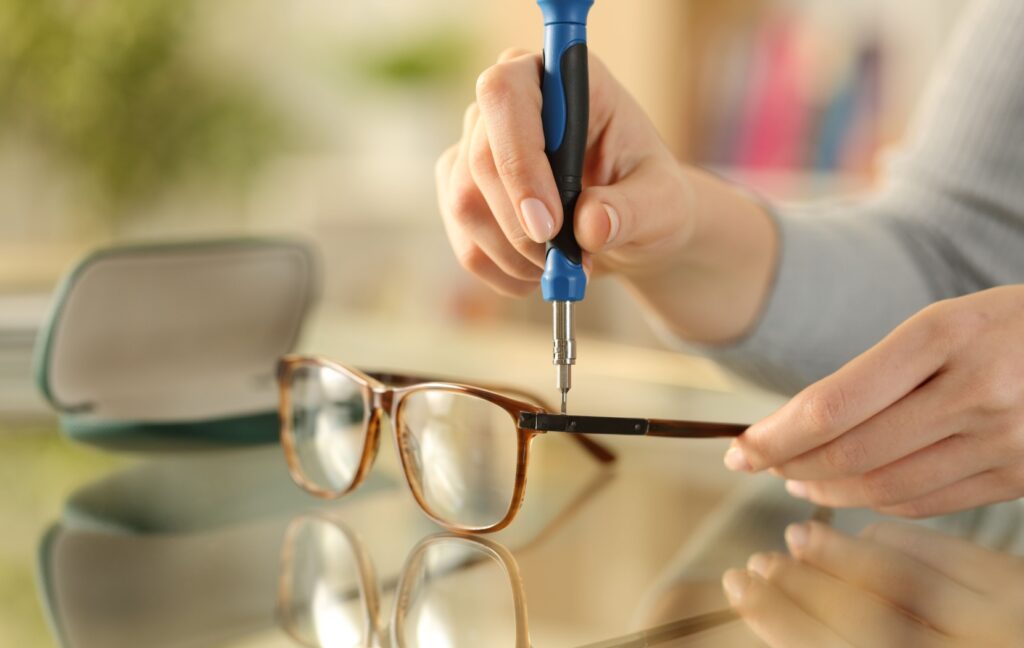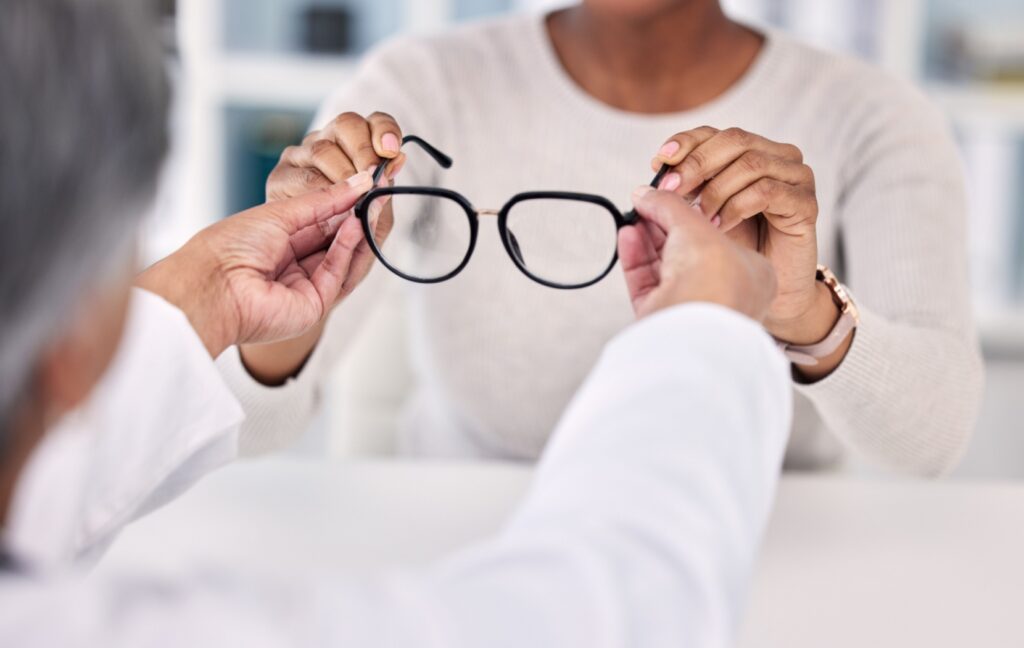Finding the perfect pair of glasses goes beyond choosing a style you love. The right glasses should feel comfortable, stay securely in place, and enhance your vision without causing headaches or constant adjustments. Understanding how glasses should fit your face can transform your eyewear experience from frustrating to fantastic.
The best way to find glasses that fit your face is to get an eye exam to determine your current prescription and then have a custom frame fitting with your eye care provider to ensure your new frames fit properly.
What Makes Glasses Fit Perfectly?
The perfect fit should feel like wearing eyeglasses made just for you. Your glasses should stay in place during everyday activities without requiring constant adjustment, such as pushing them up your nose or adjusting them behind your ears. They should feel snug but never tight, secure but never pinching.
Properly fitting glasses serve several important purposes:
- They ensure your lenses align correctly with your eyes, which prevents eye strain.
- They distribute weight evenly across your nose and ears, preventing pressure points.
- Well-fitted frames help you feel confident and comfortable throughout your day.
When glasses don’t fit properly, you might experience sliding frames, red marks on your nose, headaches, or even blurred vision. These issues often stem from incorrect measurements or choosing frames that don’t match your facial features.
Key Measurements for a Proper Glasses Fit

1. Pupillary Distance (PD)
Your pupillary distance measures the space between the centers of your pupils. This measurement might seem minor, but it’s essential for proper lens alignment. When your lenses align perfectly with your pupils, you’ll experience clear focus and optimal vision correction.
If your PD measurement doesn’t match your lenses, you might experience headaches, eye strain, or difficulty focusing. This measurement is specific to eyeglasses selection, which is why it’s not typically included in your vision prescription.
2. Bridge Width
The bridge width refers to the distance between the 2 lenses where they sit on your nose. A bridge that’s too narrow will pinch and leave uncomfortable marks, while one that’s too wide will cause your glasses to slide down constantly.
A properly fitted bridge distributes weight evenly across your nose, helping your glasses stay securely in place.
3. Temple Length
Temple length affects how your frames rest on the sides of your head and behind your ears. The temples, or arms of your glasses, should extend comfortably to your ears without pulling or creating pressure points.
Glasses with temples that are too short will pull and pinch your head, while longer temples will sit loosely and slip off your face. The goal is to find that sweet spot where your glasses feel secure without applying unnecessary pressure to your temples.
4. Lens Width & Height
Your lens dimensions contribute significantly to the overall balance and functionality of your glasses. These measurements ensure your eyes are properly centered within the lenses and that you have an adequate visual field.
For progressive or multifocal lenses, lens height becomes especially important because it affects how smoothly the lenses transition between different correction zones. Proper lens sizing also ensures you’re getting the full benefit of your prescription.
Choosing Frames for Your Face Shape
While fit is the most important factor, selecting frames that complement your face shape can help you feel more confident and stylish. Remember, these are guidelines, not strict rules. The most important thing is choosing glasses that make you feel great.
Oval Face
Oval faces feature well-balanced proportions with slightly wider cheekbones and a gently rounded jawline. This face shape complements virtually any frame style. For the best balance, try frames that are as wide as the broadest part of your face. Rectangle, round, and even bold geometric frames can all look fantastic on oval faces.
Round Face
Round faces have softer angles with roughly equal width and height. Angular frame styles, such as rectangular or square shapes, create contrast and add definition to rounder features. These frames help elongate the face and bring structure to softer angles.
Square Face
Square faces feature well-defined jawlines and equal proportions of width and height. Round or oval frames work beautifully to soften angular features. Frames with slightly curved edges add balance and a touch of softness to your overall look.
Heart-Shaped Face
Heart-shaped faces are widest at the forehead and taper to a narrower jawline. Frames with bottom-heavy designs or rounded edges work particularly well. Aviator or cat-eye shapes are excellent options that balance the wider forehead with the narrower chin.
Diamond Face
Diamond-shaped faces are characterized by narrow foreheads and chins paired with wider cheekbones. Semi-rimless or oval frames enhance the softer angles of this face shape, while frames with detailing near the brow line can beautifully emphasize your eyes.
Experience the Difference of Proper Fit
Glasses should feel as great as they look. The only rule that truly matters is how your glasses make you feel. A well-fitting pair that complements your style and boosts your confidence is the perfect pair for you. Visit us at Vision Care Grayslake to explore our extensive selection of frames and experience our personalized fitting service. Our knowledgeable team is dedicated to helping you find glasses that not only look fantastic but also feel comfortable throughout your day. Schedule your appointment today and discover the difference properly fitted eyewear can make.




